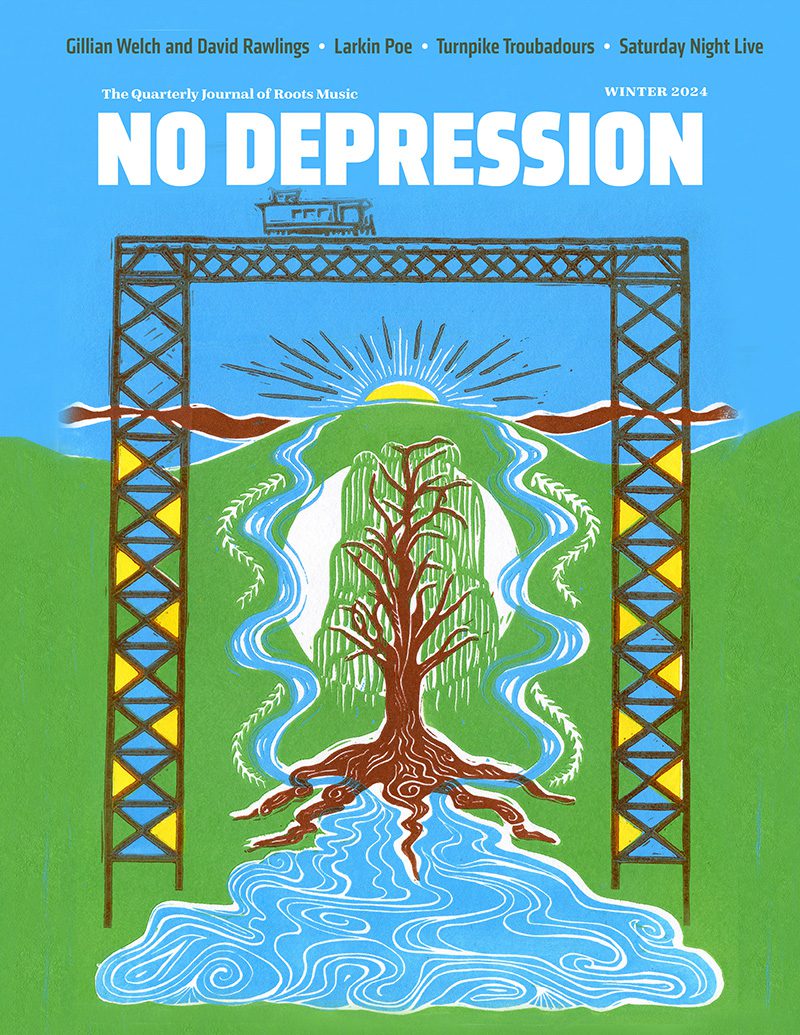as i wait for the postman to come, i shall share dulcimer stories
It has been barely more than four years that David Schnaufer passed away. That would be his picture above these words. He’s holding a mountain or Appalachian dulcimer, you may call it either, of which he was credited with restoring to popularity with his series of recordings, session work and as a teacher and faculty member at Vanderbilt University. I had only a vague awareness of the dulcimer until one night in Nashville maybe twenty years ago, when I happened to see David play along with several other musicians and it was a sound that touched my soul. Warm, bright tones caught in rhythmic strumming patterns that instantly take you back to a different time and place. A year later I was sifting through some compact discs that were dropped off at my office and I noticed one called “Dulcimer Player Deluxe” and it was David on the cover. It’s been in rotation often at my home.
I have been playing guitar now for over forty-five years and last May I had an unfortunate accident where I ruptured the tendon of the middle finger of my left hand. Within twenty-four hours I went from the emergency room at our small town hospital to an urgent care facility, a radiologist and to the finger and hand specialist at the University of California in La Jolla. There really wasn’t much that could be done in this situation I learned. Fitted with a special hard plastic splint, I was to keep the finger completely immobile for sixteen weeks. Or longer. If I moved or wiggled it just once, I would have to start the process all over again. And so throughout the summer I was unable to make the music I make, although by the eighth week I was allowed to carefully play my dobro and pedal steel. That helped.
Six weeks ago the splint came off and I began to play again. It all worked, except for a little stiffness. The physical therapy routine was to simply play. All was well, until I tripped and fell on the sidewalk just a week later. I protected my finger and tore the heck out of my forearm and elbow. Three days a week at the physical therapist for a couple of weeks, and she had me playing again in no time.
During this time I have been thinking a lot about my relationship with the instruments that are hanging on the wall around me and about the music I play. When I was younger I thought it would be a career choice, but by the time I was twenty I drifted into working on the business side of music and enjoyed it. Until it ended three years ago this month. And since that time I’ve tried to find a way to insert myself back into the creative side of music by performing when I can, writing, practicing, studying and listening. I’m slowly getting closer to figuring it out.
A long time ago I played rock, blues and country. Then I thought I was a bluegrass picker. Barely. I moved to folk but can’t sing all that well. Developed a finger picking style, learned open tunings and a little about slack key. Getting in my groove. And last week I picked up this old Epiphone Les Paul I had bought a few years back and have never played although it sure looks pretty, and took it over to a small local shop and told them they could have it. “Make me an offer….trade me something acoustic for it. I don’t care.” And I really didn’t.
Gary took me to the back of the shop and said sit down. He handed me a small black case and took out a very attractive cherry hourglass-shaped mountain dulcimer. My first lesson lasted four minutes and I remembered David Schnaufer and how he played that night in Nashville, and how much I loved the music on that CD of his. With an offer I couldn’t refuse, Gary told me to take it home for the weekend and see how it felt, and if I wanted to keep it, we’d do a straight up trade. In a few short hours I was hooked and by using the internet, I entered the Dulcimer Zone….
I read, I studied, I browsed, I listened. And I made music easily. I found blogs and stories but surprisingly very little recorded music for sale on Amazon. There were lots of records released in the sixties and seventies, but most have never made it to shiny digital plastic discs. You can still get David’s recordings and a great one by Jean Ritchie but I had to search hard for vinyl rips from Roger Nicholson, Lance Frodsham and a whole bunch of other lesser known regional players. And I had to learn that I was looking for mountain dulcimer music…not the hammered variety.
By last Monday I decided that the cherry dulcimer which was made in Romania and probably a great deal for the Les Paul, wasn’t going to cut it. If I was going to play, I needed a hand made instrument built in America by a craftsman who lived in the mountains who was in touch with not only the feel and sound of the wood, but steeped in the tradition. Please allow me to introduce you to Walter Messick of the The Konnarock/ Whitetop area of Southwest Virginia in the Blue Ridge Mountains.
I found Walter’s website for Cabin Creek Musical Instruments on page nine or ten of a Google search. I liked what I read and saw. Here’s his story: “After moving from Philadelphia to the mountains to pastor two small Lutheran churches, I fell in love with the musical heritage of the area. In 1981, one of my parishioners, good friend and national treasure, Albert Hash, and his talented daughter, Audrey, apprenticed me for a year prior to his death, starting me on a path that changed my life forever. Making musical instruments has become a passion and way of life. The lives of several instrument makers have touched me deeply and for which I am eternally grateful. As I mentioned earlier, Albert Hash and Audrey Hash-Ham not only taught me instrument making skills, but even more importantly, the values of sharing, giving, helping, caring, accepting and loving. After being “on the road”, so to speak, for over 20 years exhibiting at craft shows up and down the east coast, I am finally “home” doing only a couple of craft shows a year. Most of my energy now is centered around my workshop in Whitetop.”
He had about ten mountain dulcimers pictured on the website for sale and although you could order them online, he wrote that he wouldn’t mind a call. So I did. He had just gotten home from shopping at the only market near him, about an hour away. We started to talk, mostly about each other and life. We were both born and raised in Philadelphia, only about five miles from each other, and he is fourteen years older than me. I lived in Minnesota for a few years, he lived in Wisconsin. And that’s where the similarities end, as he chose a much different path of craft and creation and faith. Living in the woods, working in his shop. Carrying forth a tradition, a uniquely American one at that. A traditional style of music that could easily die off and be forgotten. Which may be the reason I’m writing this today.
Mountain dulcimers are made from any number of types of wood, black walnut seems to be a favorite, as is cherry and spruce and pine and redwood and poplar and other hard wood. Walter makes his instruments (he does more than the dulcimer) with wood that are locally harvested from the Blue Ridge Mountains and some even have historic significance. He has a beautiful chestnut dulcimer that was made with the wood from a local elementary school that was demolished back in the eighties.
So how do you purchase an instrument without playing it? Trust. You talk to the builder, and you just know. Walter and I spoke for an hour not only about each other, but the music I want to make and the instruments he makes. I’ve only been a player for three days…he has devoted his entire life. The man knows. And so this is what we did…
Looking at the pictures he posted on his site and after discussing each one, I chose the three that I was interested in. He went out to the shop and played each of them to make sure that they would be what I was looking for. And then he called me back after lunch, and put me on the speaker phone. One by one he strummed each, explaining what he heard and asking if I could tell the differences. At first it was hard, but soon I could differentiate. And I chose one.
The whole instrument is butternut, except for the cocobolo fretboard overlay. Butternut, also called white walnut, is a very light-weight wood. It is a cousin to black walnut but much lighter in weight and color. I love how it looks, and I love the sound. Through the phone lines, three thousand miles away. This is the 818th mountain dulcimer that Walter has made. And he’s made it for me. On Monday he’ll drive off the mountain down to the closest town where there’s a post office. He said it should be here by the weekend. Which is good…there’s a dulcimer festival at a Methodist church down in Culver City next Saturday. Maybe I’ll go.
By the way…that question about what Americana is? This is it. Thanks Walter…thanks David.
Here’s what is replacing that old Les Paul from Korea or China:







